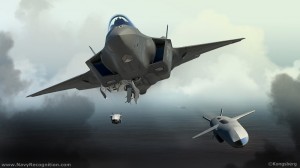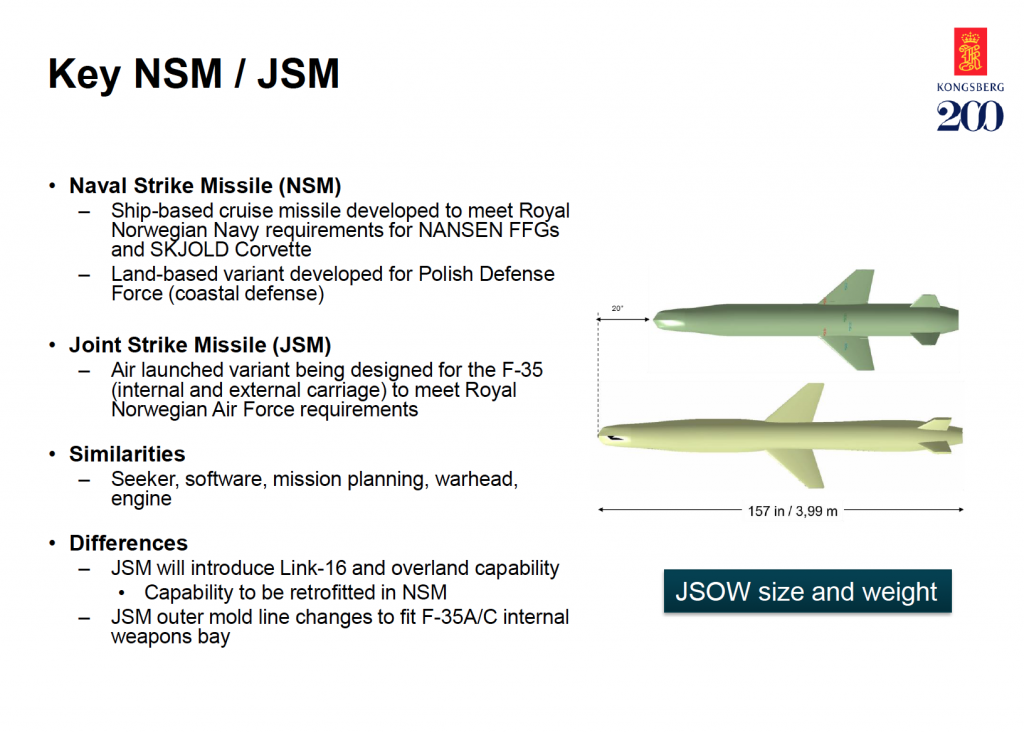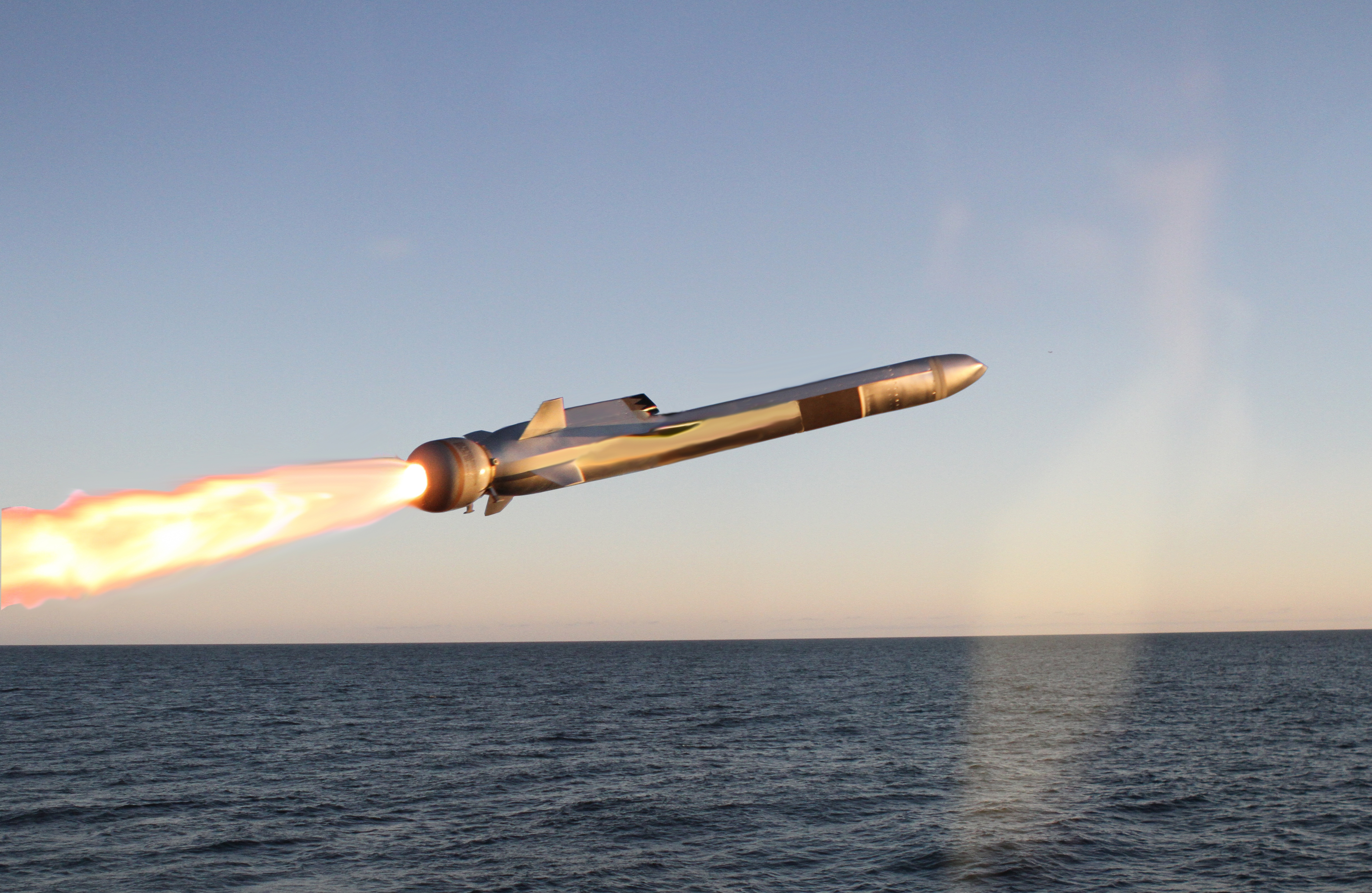Viking Enablement: The US Navy Selects a Norwegian Missile
Last week, the Pentagon announced that Raytheon has won a $14.8 million contract to purchase the Naval Strike Missile for the Littoral Combat Ship and to put it in line to do the same for the new class of frigates which the US Navy is postured to buy.
According to a story published by USNI News:
The award calls for the delivery of the Kongsberg designed, “encanistered missiles loaded into launching mechanisms; and a single fire control suite.” The contract did not specify how many missiles were paid for in the contract, but USNI News understands the Thursday award buys about a dozen missiles.
The subsonic NSM has been in service with the Royal Norwegian Navy since 2012. The weapon has a range of about 100 nautical miles with a cost of slightly less than the Raytheon Tomahawk Block IV cruise missile (the Navy quotes the price per round of the TLAMs at $569,000 per round in FY 1999 dollars (about $868,000 in 2018, adjusted for inflation).
The companies announced they would pair together to compete for new U.S. anti-ship missile contracts in 2015. In 2016 Raytheon and Kongsberg agreed to assemble and test the Norwegian missile’s components in Raytheon’s Tucson, Ariz. facility and the launchers at Raytheon’s plant in Louisville, Ky.
Raytheon has paired with Kongsberg Defence and Aerospace (KDA) in the missile world for some time, and they have a recent win as well in an Australian competition where the NASAM has been selected by the Australian Army.
As described on the Kongsberg website:
When searching for missiles for its new frigates and coastal corvettes, the Royal Norwegian Navy studied thoroughly existing missiles on the market and the planned upgrades of these. None of these missiles were found to satisfy the requirements of a modern navy well into 2015 and beyond. It was therefore decided to develop a completely new missile based on latest technology, the NSM.
NSM is the only fifth generation long range precision strike missile in existence as per today. Already chosen by the Royal Norwegian Navy for its new frigates and new coastal corvettes, the NSM will be fully operational on these ships when they enter service in the near future. The NSM is also selected by the Polish Navy for use on its new coastal artillery installations.
The NSM is a very flexible system which can be launched from a variety of platforms against a variety of targets.
The airframe design and the high thrust to weight ratio gives the NSM extremely good maneuverability. The missile is completely passive, has proven its excellent sea skimming capabilities and with its advance terminal maneuvers it will survive the enemy air defences. The Autonomous Target Recognition (ATR) of the seeker ensures that the correct target is detected, recognised and hit, at sea or on land.
Obviously, the US Navy agrees.
And in a little noticed deployment in 2014, the Norwegians brought a frigate to RIMPAC.
Chris Cavas of Defense News has highlighted the importance of the missile exporting mission as a motivator for coming to RIMPAC 14.
And the crew of the Aegis frigate Fridtjof Nansen — the first Norwegian ship to take part in the huge Rim of the Pacific (RIMPAC) exercises — did just that when they fired a single surface-to-surface missile and scored a dramatic hit on an old target ship.
“It was a very successful shot.
The missile performed exactly as programmed and expected,” Cmdr. Per Rostad, the ship’s commanding officer, said in an interview Saturday.
Speaking via satellite phone while his ship was underway near Hawaii, Rostad would not provide details of specific features demonstrated in the July 10 live fire exercise, when the Fridtjof Nansen launched a Naval Strike Missile (NSM) at the decommissioned US Navy amphibious ship Ogden.
“But the missile system has a number of features that make it unique on the market and we were able to demonstrate those features,” Rostad said. “We also demonstrated some agility.”
Developed by Kongsberg, the NSM is designed to be highly maneuverable, and features an autonomous target recognition capability that allows it to recognize ships of a particular class or design, and even to target specific areas of a ship based on its silhouette.
“The key takeaway from the NSM exercise,” Rostad said, “is the missile was demonstrated to work just as well in a tropical climate as in an arctic climate.
Norwegian Frigate at RIMPAC 2014: The Norwegian Naval Strike Missile on Display from SldInfo.com on Vimeo.
The NSM comes into the context of a broader set of developments underscoring the advantages of shaping a family of missile systems for a fleet as well.=
The JSM is designed to be a family of systems, with an air launched variant, and this has been a key driver for Norwegian government investment.
In looking at the F-35 as a global program, not simply an aircraft but a key enabler of a 21st century air-combat enterprise, we noted earlier:
With the F-35 the situation is totally different. The F-35A to be purchased by Norway has the same software as every other global F-35, and so integration on the Norwegian F-35 provides an instant global marketplace for Kongsberg. And the international team marketing the aircraft – is de facto – working for Kongsberg as well.
It is very likely, for example, that Asian partners in the F-35 will find this capability to be extremely interesting and important. And so Kongsberg’s global reach is embedded in the global reach of the F-35 itself.
And since I wrote that in 2014, both the Australians and Japanese are working with Kongsberg along these lines.
In a story we published on June 29, 2107, we highlighted the allied engagement around this family of systems.
During a visit to Norway earlier this year, the Norwegian Deputy Minister of Defense underscored the importance of allies building new missile capabilities for the F-35 as a coalition aircraft.
In the discussion with Mr. Øystein BØ, the State Secretary and Deputy Defense Minister at the Norwegian Ministry of Defense, the F-35 and the Norwegian JSM was discussed as follows:
An aspect of the F-35 program, which is not generally realized, is the importance of allied investments in capabilities, which can be used across the F-35 global enterprise.
In the Norwegian case, the Joint Strike Missile (JSM), which is considered a crucial asset in providing for maritime defense of Norway, is available to other NATO-allies flying the F-35 as well.
“This is a 21st century aspect of burden sharing as our investments in ‘our’ missile benefits all F-35 users of this missile across the globe, whether in Japan, Australia or in Europe.”
“It is not money that just goes directly into our armed forces, but it’s a lot of money that goes into developing capabilities that the alliance needs. It is about contributing to our joint security as well.”

In April 2017, the Australian Department of Defence signed on with Kongsberg to work on the JSM.
According to Australian Aviation:
Kongsberg Defence Systems has entered into a contract with Defence for the integration of a new capability in the Joint Strike Missile (JSM) worth the equivalent of $23 million.
The unique, state-of-the-art radio frequency (RF) seeker sensor developed by BAE Systems Australia will enable the JSM to locate targets on the basis of their electronic signature, Kongsberg said in a statement.
This contract is a result of an agreement between Australia and Norway to cooperate on the further development of the JSM that was announced in February 2015.
“JSM is the fifth-generation long-range precision strike missile that will be integrated for internal carriage on the F-35,” Kongsberg stated. “Using a combination of advanced materials, ability to fly low, while following the terrain and using advanced passive seekers, the missile is extremely difficult to detect and stop, even for the most advanced countermeasures and defence systems.”
BAE Systems stated that the signing of the contract will enable Kongsberg to continue the integration and qualification of the passive RF sensor.
“The company will provide a low-cost, lightweight and highly sensitive electronic support measure receiver for incorporation on JSM, which will feature an additional land attack and littoral attack capability, as well as a two-way communications line for target adjustment and inflight termination,” BAE Systems stated.
“In its work with Kongsberg, BAE Systems has delivered a pre-production passive RF sensor for the JSM program, which was used to perform fit checks, system integration and support flight-testing in a development-standard missile.”
In support of the contract, BAE Systems will supply new sensors to Kongsberg for use in its qualification activities.
“This is a great example of niche technology being developed through government and industry collaboration that has the potential to provide long-term, sustainable exports for Australia,” said BAE Systems Australia chief executive Glynn Phillips.
The company stated that the technology was developed with the support of a Defence-funded program, and that it received a grant in 2013 to help commercialise the technology.
“We are very pleased that Australia joins the development of JSM by funding the integration of the RF seeker, and that we together can increase the JSM capabilities,” said Eirik Lie, president of Kongsberg Defence Systems.
Now Japan is moving forward in considering JSM for its own F-35s as a land attack and naval attack component for its air combat force.
According to a June 26, 2017 article published by Yomiuri Shimbun, the Japanese Government mulls equipping F-35s with air-to-surface missiles.
The government is considering equipping cutting-edge F-35 stealth fighters with air-to-surface missiles, which are capable of striking remote targets on land, and plans to deploy these fighters to the Air Self-Defense Force, The Yomiuri Shimbun has learned.
It will become the first introduction of such missiles for the Self-Defense Forces. The government hopes to allocate relevant expenses in the fiscal 2018 budget, according to sources close to the government. The main purpose of the introduction is to prepare for emergencies on remote Japanese islands, while some experts believe the government is also eyeing possession of the capability of attacking targets such as enemy bases for the purpose of defending the country.
According to the sources, F-35 fighter jets that will replace the ASDF’s F-4 fighter aircraft are employed by U.S. forces and others. The F-35 aircraft has an advanced stealth capability that makes the aircraft less visible on enemy radar. The ASDF plans to introduce a total of 42 units of the F-35 and gradually deploy them to the Misawa Air Base in Aomori Prefecture starting at the end of this fiscal year. The government is considering introducing some additional capabilities for the aircraft.
The most likely option the government is currently focusing on is the Joint Strike Missile (JSM) that is being developed mainly by Norway, which also participated in an international project to develop the F-35. The ASDF currently has no air-to-surface missile capabilities, but the JSM has both air-to-ship and air-to-surface capabilities, with an estimated range of about 300 kilometers.
The Defense Ministry is building up national defense systems to defend remote islands, such as the Nansei Islands. In addition to deploying new Osprey transport aircraft to the Ground Self-Defense Force, the ministry plans to create an amphibious rapid deployment brigade, similar to other nations’ marines.
As an air-to-surface missile has a long range, it is possible to effectively strike a target from safe airspace. For this to be possible, the ministry decided it was necessary to consider introducing the JSM to prepare for situations such as preventing foreign military vessels from approaching remote islands or the SDF launching an operation to regain control of an occupied island.
Meanwhile, if the F-35 aircraft with an advanced stealth capability is equipped with long-range air-to-surface missiles, it will effectively be possible to use the F-35 to attack bases in foreign countries.
The government has said that the Constitution allows Japan to possess the capability of striking enemy bases, but the nation does not actually possess the capability as its political decisions have been based on an exclusively defense-oriented policy.
If Japan introduces air-to-surface missiles, it could prompt opposition from neighboring countries. Therefore, the government is believed to be seeking the understanding of those countries by explaining that it does not intend to use the capability to attack enemy bases, but to defend remote islands.
However, with North Korea continuing its nuclear and missile development programs and repeatedly conducting provocative actions, there are growing calls for the government to possess the capability to strike enemy bases to improve Japan’s deterrence.
Amid such a situation, Prime Minister Shinzo Abe has expressed on multiple occasions his intention to consider the issue. On June 20, the Liberal Democratic Party’s Research Commission on Security compiled an interim report on proposals for the next medium-term defense program for fiscal 2019-23, in which it called for the government to swiftly start discussions on possessing the capability to attack enemy bases.
Editor’s Note: In a briefing from Kongsberg on their naval and joint strike missiles, they highlighted the relationship between the two as follows:

In short, the US is leveraging allied investments along the line which I highlighted in my report on the strategic opportunity to do so.
As the US looks to develop new capabilities, in many ways, a key way to accelerate modernization is embracing foreign capabilities
The shift from slo mo to preparing for high tempo and high intensity operations is a major challenge for the US military and its allies. It is about a culture shift, a procurement shift, an investment shift. But mobilization is even more important than modernization.
To get ready for the shift, inventory needs to become more robust, notably with regard to weapons. In visiting US bases, a common theme in addition to readiness and training shortfalls, is the challenge of basic inventory shortfalls.
The Trump Administration has come to power promising to correct much of this. But there simply is not enough time and money to do readiness and training plus ups, mobilization and rapid modernization.
Donald Trump as a businessman might take a look at how DoD could actually functions as an effective business in equipping the force and having highlighted the question of allies might be pleased to learn of significant allied investments in new combat systems which his own forces can use, thus saving money and enhancing capability at the same time.
One way to augment the force would be to do something which would seem to be at odds with the Make America Great notion. As one of my Danish friends put it well: “I have no problem with the idea of making America great again. For me, the question is how?”
One way to do so would be leverage extant allied programs and capabilities which if adopted by the US forces would save money but even more importantly ramp up the operational capability of the US forces and their ability to work with allies in the shortest time possible. By so doing, the US could target investments where possible in break through programs which allies are NOT investing in.
Leverage Allied Investments and Combat Learning Experience in Modernizing the U.S. Military

